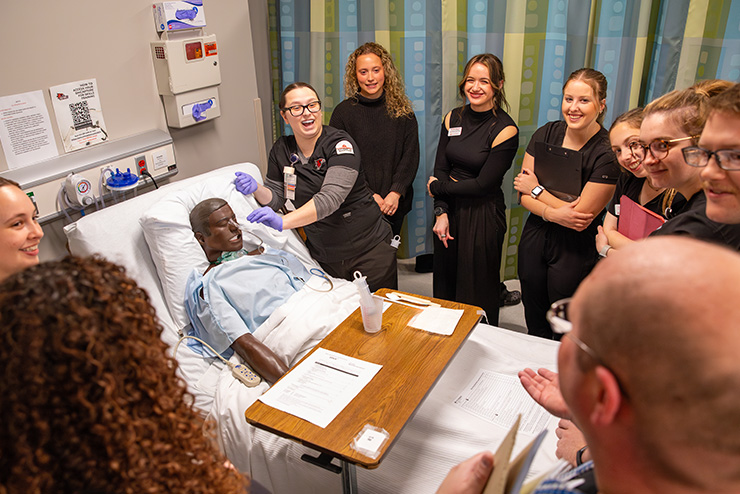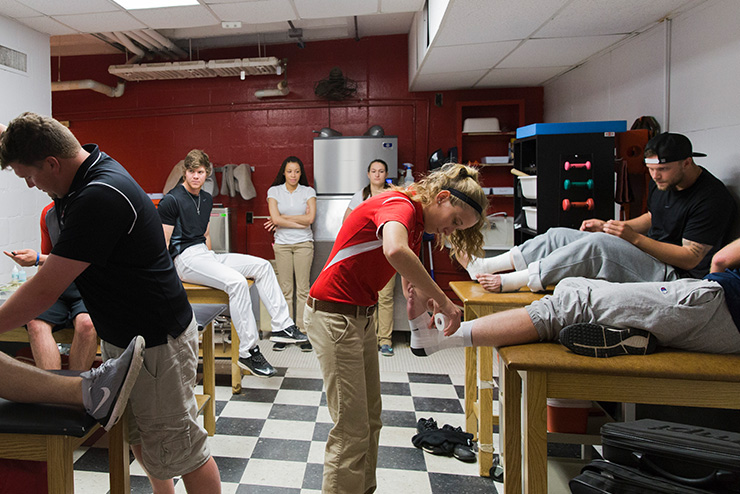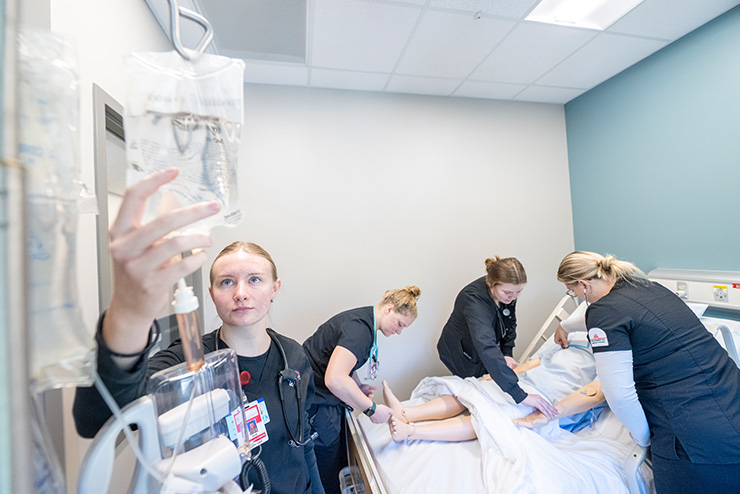In healthcare, experience is everything. At Southeast Missouri State University (SEMO), students don’t wait until graduation to step into real-world roles—they begin the transition from classroom to clinic, hospital, and therapy room from day one.
Across SEMO’s healthcare programs, the learning environment is designed to mirror the professional world. Nursing students navigate high-pressure scenarios in simulation labs before stepping into clinical rotations at hospitals and care facilities. Future athletic trainers work alongside professionals in sports medicine, gradually gaining the autonomy to assess and treat injuries in live settings. Communication disorders students manage real patient cases at the University’s Center for Speech and Hearing, gaining hands-on experience with industry-standard technology before ever applying for a clinical fellowship.
“Students are encouraged to actively apply their classroom learning in real-world settings from the start of their nursing education,” said Dr. Moretta Burk, interim chairperson and associate professor in the Department of Nursing at SEMO. “By the time they graduate, our nursing students have built a strong foundation in clinical reasoning and patient care through hands-on experiences in diverse healthcare settings. While they will continue to grow and adapt as they transition into practice, their education has prepared them to enter the nursing profession.”
That level of preparation requires more than just exposure—it demands responsibility. Athletic training students cycle through multiple clinical rotations, from high schools to orthopedic clinics, gradually taking the lead in decision-making under the watchful eye of their preceptors.
Nursing students refine their clinical reasoning as they move through different healthcare settings, while communication disorders students engage with patients using advanced diagnostic and therapeutic tools.
 “The clinic isn’t just an extension of the classroom; it’s where theory meets application,” said Mrs. Sarah Sargent, clinic director of the Center for Speech and Hearing. “By working directly with clients, students gain a level of experience that’s hard to replicate elsewhere. They’re not just learning skills—they’re developing the confidence and clinical judgment they’ll need in their careers.”
“The clinic isn’t just an extension of the classroom; it’s where theory meets application,” said Mrs. Sarah Sargent, clinic director of the Center for Speech and Hearing. “By working directly with clients, students gain a level of experience that’s hard to replicate elsewhere. They’re not just learning skills—they’re developing the confidence and clinical judgment they’ll need in their careers.”
Keeping pace with an evolving healthcare landscape, SEMO continuously adapts its curriculum to reflect industry advancements. In athletic training, students now train with portable diagnostic ultrasound devices, bringing imaging technology to the sidelines. In nursing, curriculum updates ensure students are prepared for the latest patient care innovations, while communication disorders students gain experience with AI-integrated clinical tools and cutting-edge speech technology.
 “The goal isn’t just to familiarize students with the environment—it’s to integrate them into it,” said Dr. David Tomchuk, associate professor and clinical education coordinator for Athletic Training/Health Sciences. “By the end of their training, they aren’t just observing; they’re leading.”
“The goal isn’t just to familiarize students with the environment—it’s to integrate them into it,” said Dr. David Tomchuk, associate professor and clinical education coordinator for Athletic Training/Health Sciences. “By the end of their training, they aren’t just observing; they’re leading.”
At SEMO, the transition from student to professional doesn’t happen after graduation—it’s a process that unfolds over years of immersive, hands-on learning. By the time they step into the workforce, SEMO graduates have already been there.
To learn more about SEMO’s healthcare programs, visit semo.edu/academics/programs/ or contact the Admissions Office at admissions@semo.edu or (573) 651-2590.
